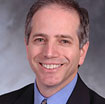Commentary on Psalm 116:1-9
The 17th Sunday after Pentecost is the only instance of Psalm 116:1-9 as a Sunday reading in the lectionary that provides opportunities to use most of its second half (verses 10-17) which are read on Maundy Thursday and Eastertide for Year A.1
If you make this selection the basis of your message, it will be tempting to dip into verses 10-19 for homiletical insight. Indeed, a strong case can be made for the structural coherence of Psalm 116 as a literary unit,2 but there are also reasons for treating verses 1-9 independently, as the Septuagint did by dividing the poem into two psalms. As one of about a dozen Thanksgiving psalms, this passage is spoken from a post-crisis perspective, but the psalm offers no real clue as to the nature of the problem(s) that prompted the poet’s “supplications” (verse 1). It will probably be helpful, if not necessary, to call attention to the second half of the psalm simply because in the key features we can emphasize for the first half carry over into the second half. Nevertheless, even on its own terms, these nine verses are by no means lacking in theological and spiritual resources for the life of faith, the church’s worship, and the mission of God’s people. Here are some of the aspects that strike me as being most fruitful for proclamation.
First, the flexibility of prayer-forms. We are indebted to the insights of form criticism for psalms research, mainly because thinking about the typical structure and elements of laments and praises helps us understand their message. Psalms scholars tell us that Psalm 116, however, does not follow the “traditional” order of elements in thanksgiving psalms, where we typically hear a narration of the poet’s crisis before learning about the deliverance or share in the act of thanksgiving.3 Rather, as one commentator notes, it alternates the “experience of deliverance” (3-4, 7-11, 15-16) with “outbursts of thanksgiving” (1-2, 12-14, 17-19).4 This gives certain energy to the prayer, what Derek Kidner described as “infectious delight and touching gratitude.”5 The takeaway from this observation is not only the assurance that our prayers need not conform to a rigid pattern; the psalm’s inclusion in the canon is further evidence that the faith community believed that God is pleased to hear this variety. Each believer’s faith experience and spiritual inclinations will be different, and this psalm can, as Kidner added, help others “to find words for [their] own public thanksgiving.”6
Second, the contrast of living and dying. Whether the psalm is studied as a whole or in part, James Mays is correct that the theme word is “death”: it ensnares (verse 3); we need to be delivered from it (verse 8); and it comes to all God’s “faithful ones” (verse 15). Moreover, in keeping with a Hebraic mindset, the experience of death is equated with Sheol (verse 3) — the place of the dead — and thus it is “beyond any possible relation to God.”7 In Christian proclamation, of course, there are other scriptural resources that lift up “the resurrection of the body and the life everlasting,” and we should in no way diminish the blessedness of this hope. Nevertheless, I believe the Israelite acknowledgment of death’s reality meant that they “set maximum value upon the God-given resources of this life, and so upon God himself.”8 Furthermore, what is central to the New Testament (NT) hope — that God is gracious and righteous — is central to the message of the text; indeed, the phrase, “Gracious is the Lord,” occurs at the precise center of these nine verses. Thus, I do not think that what we might call “the Christian life” is all that different from the relationship our Hebraic faith-ancestors sought. I appreciate Eugene Peterson’s exposition of this psalm, in which he explores the last sentence of our lection: “I walk before the Lord in the land of the living.” The verb “to walk” is in the hithpael verb pattern, which in this case renders a sense of repetitiveness. By looking at other uses of this form (e.g., Genesis 3:8; 5:22, 24; 6:9; Job 1:7; Psalm 12:9), Peterson affirmed the idea that “spiritual formation cannot be done in a hurry; it cannot be forced into a schedule.”9
Third, the communion of the saints. Several scholars mention how this psalm functions in Judaism — as one of the Hallel songs of Passover — and Christianity, on Maundy Thursday in particular and for the Lord’s Supper in general.10 But when I speak of the “communion of saints,” I am not thinking primarily of the sacrament but of the creedal affirmation, namely, that God’s people throughout all time and place experience a real fellowship through our union with Christ. Psalm 116 may originally have expressed the gratitude of one Israelite worshiper before the congregation at the temple, but it becomes our song through the unity of the church with the assembly of Israel. There is a reason that the Greek ekklesia was the NT writers’ choice to identify the “church,” because the Septuagint used that term to translate the Hebrew word for the ancient “assembly” (qahal). And this is why I suggested at least referring to the last ten verses of the psalm. It is there that the poet introduces several references to sacrifices, vows, offerings, and public worship. “In the presence of all his people” occurs twice (verses 14, 18), inviting us to practice the same model of gratitude. It seems fitting that a service in which Psalm 116 is the sermon text would create the time and space for worshipers to offer testimony to answered prayer and to intercede for those who are still waiting for answers.
Notes:
1 Commentary first published on this site on Sept. 13, 2015.
2 For example, Michael L. Barré, “Psalm 116: Its Structure and its Enigmas” JBL 109 (1990): 61-79.
3 J. Clinton McCann “The Book of Psalms” in The New Interpreter’s Bible (Nashville: Abingdon, 1996). IV, 1148.
4 Willem VanGemeren, “Psalms” in Expositor’s Bible Commentary (Grand Rapids: Zondervan, 1991), 5, 724.
5 Derek Kidner, Psalms 73-150 TOTC (Leicester: Inter-Varsity Press, 1975), 407.
6 Ibid.
7 James L. Mays, Psalms, Interpretation, (Louisville: John Knox, 1994), 370.
8 Leslie C. Allen, Psalms 101-150, WBC (Waco: Word Books, 1983), 180.
9 Eugene Peterson, “Land of the Living,” Ex Auditu 18 (2002): 180.
10 Mays, Psalms, 371-372.


September 16, 2018